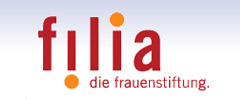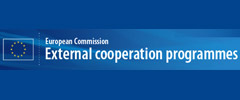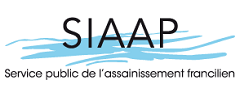Consultation with the Civil Society on human rights obligations related to access to safe water and sanitation
WECF contribution in Geneva, September 13 and 14, 2010
22.09.2010 |Margriet Samwel
The consultation of the Independent Expert on the issue of human rights obligations related to access to safe water and sanitation with Civil Society Organisation took place earlier this month on September 13-14 in Geneva.The aim of this consultation was to identify good practices that address the question of how human rights obligations related to sanitation and water can be implemented.
The criteria for the identification of good practices were discussed with various stakeholders at a previous workshop in Lisbon 2009. The outcome was the definition of 10 criteria, 5 of which are normative criteria (availability, accessibility, quality/safety, affordability, acceptability), and 5 are cross-cutting ones (non-discrimination, participation, accountability, impact, sustainability).
The independent expert gave to the 5 normative criteria the following explanations:
The criterion of availability: Availability refers to sufficient quantities, reliability and the continuity of supply. Water must be continuously available in a sufficient quantity for meeting personal and domestic requirements of drinking and personal hygiene as well as further personal and domestic uses such as cooking and food preparation, dish and laundry washing and cleaning. Individual requirements for water consumption vary, for instance due to level of activity, personal and health conditions or climatic and geographic conditions. There must also exist sufficient number of sanitation facilities (with associated services) within, or in the immediate vicinity, of each household, health or educational institution, public institution and place, and the workplace. There must be a sufficient number of sanitation facilities to ensure that waiting times are not unreasonably long.
The criterion of accessibility: Sanitation and water facilities must be physically accessible for everyone within, or in the immediate vicinity, of each household, health or educational institution, public institution and the workplace. The distance to the water source has been found to have a strong impact on the quantity of water collected. The amount of water collected will vary depending on the terrain, the capacity of the person collecting the water (children, older people, and persons with disabilities may take longer), and other factors.There must be a sufficient number of sanitation and water facilities with associated services to ensure that collection and waiting times are not unreasonably long. Physical accessibility to sanitation facilities must be reliable at day and night, ideally within the home, including for people with special needs. The location of public sanitation and water facilities must ensure minimal risks to the physical security of users.
The criterion of affordability: Access to sanitation and water facilities and services must be accessible at a price that is affordable for all people. Paying for services, including construction, cleaning, emptying and maintenance of facilities, as well as treatment and disposal of faecal matter, must not limit people’s capacity to acquire other basic goods and services, including food, housing, health and education guaranteed by other human rights. Accordingly, affordability can be estimated by considering the financial means that have to be reserved for the fulfilment of other basic needs and purposes and the means that are available to pay for water and sanitation services. Charges for services can vary according to type of connection and household income as long as they are affordable. Only for those who are genuinely unable to pay for sanitation and water through their own means, the State is obliged to ensure the provision of services free of charge (e.g. through social tariffs or cross-subsidies). When water disconnections due to inability to pay are carried out, it must be ensured that individuals still have at least access to minimum essential levels of water. Likewise, when water-borne sanitation is used, water disconnections must not result in denying access to sanitation.
The criterion of quality/safety: Sanitation facilities must be hygienically safe to use, which means that they must effectively prevent human, animal and insect contact with human excreta. They must also be technically safe and take into account the safety needs of peoples with disabilities, as well as of children. Sanitation facilities must further ensure access to safe water and soap for hand-washing. They must allow for anal and genital cleansing as well as menstrual hygiene, and provide mechanisms for the hygienic disposal of sanitary towels, tampons and other menstrual products. Regular maintenance and cleaning (such as emptying of pits or other places that collect human excreta) are essential for ensuring the sustainability of sanitation facilities and continued access. Manual emptying of pit latrines is considered to be unsafe and should be avoided. Water must be of such a quality that it does not pose a threat to human health. Transmission of water-borne diseases via contaminated water must be avoided.
The criterion of acceptability: Water and sanitation facilities and services must be culturally and socially acceptable. Depending on the culture, acceptability can often require privacy, as well as separate facilities for women and men in public places, and for girls and boys in schools. Facilities will need to accommodate common hygiene practices in specific cultures, such as for anal and genital cleansing. And women’s toilets need to accommodate menstruation needs. In regard to water, apart from safety, water should also be of an acceptable colour, odour and taste. These features indirectly link to water safety as they encourage the consumption from safe sources instead of sources that might provide water that is of a more acceptable taste or colour, but of unsafe quality.
For the cross-cutting criterions please see The Good Practices Questionnaire
http://www2.ohchr.org/english/issues/water/iexpert/index.htm
The Independent Expert has a broad understanding of the term “practice”, encompassing both policy and implementation: Good practice can thus cover diverse practices as, e.g., legislation ( international, regional, national and sub-national ), policies, objectives, strategies, institutional frameworks, projects, programmes, campaigns, planning and coordination procedures, forms of cooperation, subsidies, financing mechanisms, tariff structures, regulation, operators’ contracts, etc. Any activity that enhances people’s enjoyment of human rights in the fields of sanitation and water or understanding of the rights and obligations (without compromising the basic human rights principles) can be considered a good practice.
At the consultation on practices implemented by the civil society NGOs from 17 countries were invited to share there good practices related to human rights to access to water and sanitation with the focus on the 10 different criteria. The contributions reached from acting against the practice in the USA of a disconnection of poor non-paying users from the water supply network up to forcing the Kenyan authorities to fulfill their obligations on the human rights to access to water and sanitation in the slums of Nairobi. WECF partner, Anara Choitonbaeva from KAWS- Kyrgyzstan, presented her experiences with community based water committees and making water accessible and affordable to all members of the community.
Margriet Samwel of WECF presented the approach of Water Safety Plans for small-scale water supply systems as a tool for community mobilisation and for covering the cross-cotting criteria (non-discrimination, participation, accountability, impact, sustainability) in order to reach the 5 normative criteria (availability, accessibility, quality/safety, affordability, acceptability)
After consultation of other stakeholders such as public and private providers of water and sanitation services, the independent expert will identify and formulate good practices related to human rights obligations and criteria related to access to water and sanitation.
Related News
Calling for periods free from plastic & hazardous chemicals
Letter to Frédérique Ries, MEP, European Parliament on behalf of the #BreakFreeFromPlastics movement
04.09.2018
Together for sustainable sanitation and water security worldwide!
Stockholm, 26-31 Aug 2018: WECF participated in the World Water Week 2018 to further support the worldwide implementation of SDG 6
01.09.2018
Fifth meeting of the Expert Group on Equitable Access to Water and Sanitation, 26 - 27 June 2018
WECF shares experiences on developing and implementing Equitable Access Action Plans
27.07.2018
National Round Table and Training on Drinking Water Issues and Priorities in Macedonia
Working Package 2 – Educational measures for responsible institutions and drafting of regulations, among the on-going project „Water and Sanitation Safety Planning in Romania, Albania, and FYR Macedonia”
27.07.2018
Training for Teachers on Water and Sanitation Safety Planning
Women in Development and WECF organise a 2-day workshop in Shkodra region, Albania
27.07.2018






































